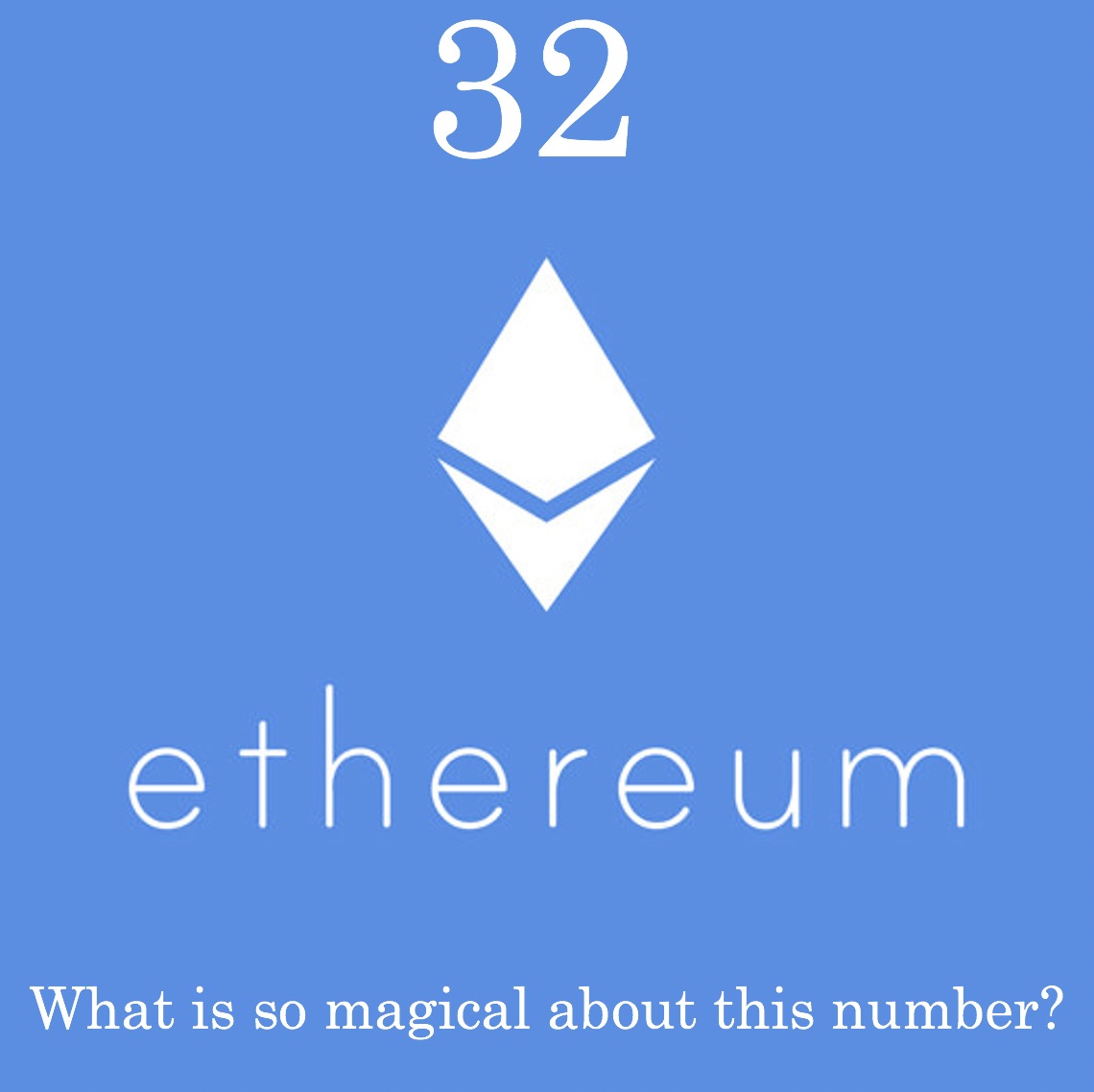32 ETH: What is so magical about this number?

Ethereum developers have set a minimum total stake of 524,288 ETH from 16,384 validators as the trigger for launching the mainnet, known as the beacon chain. The target must be met at least seven days beforehand, so by Nov. 24. If this doesn’t happen, the launch will take place seven days after the minimum staking threshold is met.
As Ethereum investors are gearing up for the ambitious Eth 2.0 update, there’s a lot of talk about “32 ETH.” What is so magical about this number anyway?
The network needs to be secured for Ethereum to thrive. Every validator staking 32 ETH to run a node is playing their part to strengthen the blockchain’s security.
ETH price is $545.57 at the time of writing.
Ethereum requires a minimum deposit of 32 ETH to a one-way deposit contract.
Participants (or whales in this case) can choose to lock in more ETH.
32 ETH is currently $17,458.24 market price.
At the time of writing, less than 20% of the total amount has been staked. If staking continues at the current rate, the Ethereum 2.0 mainnet will launch in the early weeks of 2021.
Of course, the participation rate could change. As Nov. 24 draws closer, the growing anticipation may encourage more people to stake their ETH
16,384 = 2/14
32 = 2/5
Powers of two are generally easy numbers for computers to manipulate through multiplication and division.
This means, from its outset, Ethereum 2.0 will be secured with a total value of $286 million (with ETH’s market price at $545.57).
Developers predict this is a large enough sum to discourage early attacks on the network and make it difficult for anyone to overtake network operations.
To stake or not to stake?
Potential stakers must balance this investment with the risk that staked ETH will be locked up, and therefore illiquid, for an indefinite period.
Those who do stake will be locking up their tokens in a one-way contract until the current Ethereum mainnet joins the beacon chain. Exactly when this happens, nobody knows, although the current Ethereum 2.0 roadmap specifies it will be in 2021.
The next significant developments will involve the launch of 64 shard chains, which will operate under the proof-of-stake consensus validated by those who staked ETH. However, in their initial state, shard chains won’t support smart contracts or user accounts.
Perhaps the most significant milestone for the existing Ethereum 1.0 ecosystem will be Phase 1.5, when the Ethereum mainnet joins the beacon chain as a shard chain. This will mark the transition of Ethereum to a full proof-of-stake consensus. Again, it’s set to happen in 2021, but no exact date is available as of yet.
Only when the final stage of Phase 2 comes around will it be possible to assess the full effect of the Ethereum 2.0 upgrade on the network’s scalability. At this time, shards will be fully operational, supporting smart contracts and all transaction types. However, this could be as long as two years away. On the roadmap, the Ethereum Foundation states, “Phase 2 is still very much in the research phase,” effectively confirming that development isn’t yet underway.
Even if all the roadmap phases are delivered within the next 18 months, which is a big “if,” it will be well into 2022 before the full scalable potential of Ethereum 2.0 is visible. However, rather than focusing on the development of Ethereum 2.0 as the endgame, it’s worth taking a bird’s eye view on the evolution of the Ethereum ecosystem over the coming years.
The road to sharding
Despite coming into some criticism, layer-two solutions still offer the best hope of Ethereum scalability in advance of the Ethereum 2.0 mainnet becoming fully operational. Even Vitalik Buterin himself appears to favor other layer-two platforms as the current scaling solution of choice.
This year, both Matic Network and the OMG Network unveiled layer-two solutions based on variations of Plasma, which makes use of side chains to take processing load off the main Ethereum chain.
However, while Plasma was the scaling technology of choice for a while, the focus for much of this year has been on rollups, a solution also endorsed by Vitalik Buterin. Additionally, privacy protocol Aztec has launched private smart contracts based on zero-knowledge rollups. Zero-knowledge rollups bundle transactions together using zero-knowledge proofs to verify validity.
A scalable ecosystem
It’s worth pointing out that the arrival of Ethereum 2.0 won’t negate the development efforts of the layer-two platforms currently attempting to solve for scalability. Instead, technologies such as rollups or side chains will continue to help Ethereum 2.0 scale beyond its renewed capacity once sharding is fully implemented.
So, strap in and settle down for a long ride. Ethereum 2.0 may be gearing up for an initial launch, but it’s still only the first of many steps on the long road to scalability. The ongoing development of layer-two solutions means there’s plenty of company along the way.
Don’t have enough ETH?
You can use BrozBot services to earn passive income and increase your capital to become an “Ethereum investor”. But don’t worry, you don’t need 32 ETH. You can pool your resources. Investors have the option of joining staking pools that aggegate smaller amounts of ETH.
How BrozBot Automated Bot Works?
To integrate BrozBot with your Exchange and start trading is an easy process. You need to register on an exchange, create your API credentials, add those credentials into your BrozBot account and activate your first robot by selecting the best strategy that matches your trading style.
After your Robot is active you can monitor everything from your computer or smartphone.
Go to https://brozbot.com, try it for FREE and share your experience with our community at www.facebook.com/groups/brozbot
